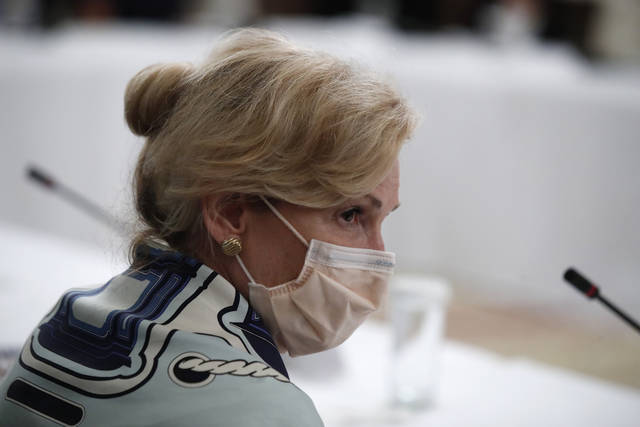Editorial: Covid-19 calls for communication
On Wednesday, White House Coronavirus Task Force coordinator Dr. Deborah Birx participated in a phone call with state and local officials from around the country.
Discussion included a number of cities that need to get “more aggressive” and step up contact tracing to address covid-19 numbers as increases are being charted.
Pittsburgh was one of 11 cities specified as having rising rates, alongside others such as Baltimore, Cleveland and Columbus — not to mention Miami, the largest city in Florida, where the virus is now burning hottest.
Not all of those cities were included in the call, a fact reported later that day by the nonprofit Center for Public Integrity. Neither Pittsburgh nor Allegheny County officials were on the call. At least five other cities have confirmed the same to various news outlets.
Because it’s hard to prove a negative, this isn’t necessarily indicative of anyone deliberately shutting out the local governments. A conference call can become more complicated with more voices. Task force spokesman Devin O’Malley said more than 320 similar calls have been conducted with a total roll call topping 150,000 participants.
The problem is when everyone isn’t on the same page. That comes down to communication.
The White House, like Pennsylvania Gov. Tom Wolf, has had issues with consistent messaging as the covid-19 pandemic has marched on for five months. Today’s recommendations are different from last week’s and last month’s. In many cases, this has been because of evolving data on a disease no one saw before December 2019.
But the novelty and unpredictability of the information makes it all the more important to keep all the players up on the changes.
Pennsylvania Secretary of Health Rachel Levine said her office had someone on Birx’s call. She also wasn’t surprised Southwestern Pennsylvania’s needs were noted.
“We know that Pittsburgh and Allegheny County have had increases,” she said, noting some of the recommendations already had been implemented by county Health Director Debra Bogen, who has taken measures to limit on-site restaurant dining before Wolf did.
While the federal government is steering the ship and the state is manning the engines, the cities are where the day-to-day work is being done. The local authorities are working to take care of sick people, test those who might be sick and try to keep people from getting sick in the first place.
So just get those 11 cities on the phone. If aggressive steps are needed to mitigate the covid-19 crisis, then a chain of communication isn’t the answer. It needs to be done directly rather than expecting the message gets passed along from state officials, who are busy themselves and pulled in multiple directions.
If there already have been more than 320 phone calls, one more shouldn’t be too much to ask. Overcommunication never has been the cause of problems in the middle of a crisis that depends on information flow to solve.
Remove the ads from your TribLIVE reading experience but still support the journalists who create the content with TribLIVE Ad-Free.

